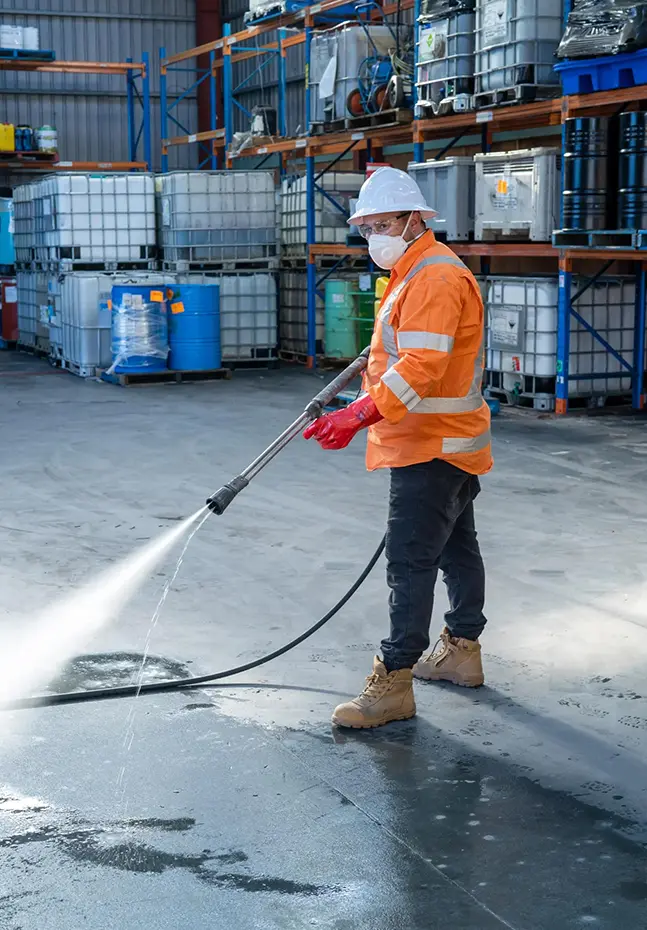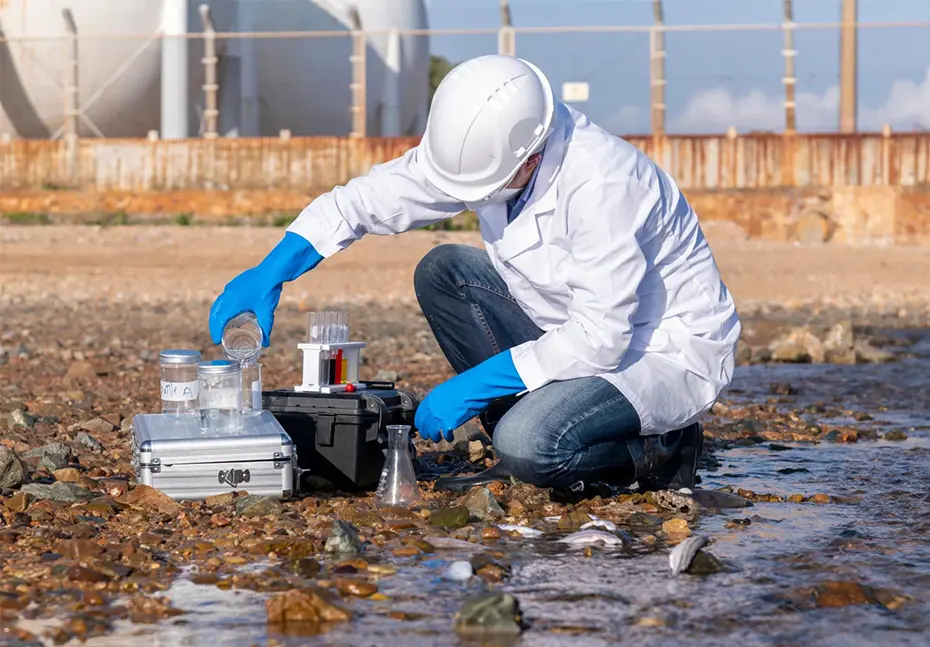Emergency spill kits are an essential item for any business or household that deals with liquid substances or store liquids.
Workplaces that deal with hazardous chemicals are especially prone to spills. For them, a spill kit can be a matter of life or death.
Spill kits come in a variety of shapes and sizes. They also contain different items depending on the type of spill that they are made to serve.
But what goes into a spill kit? And how are they used in emergency spill operations?
What is an Emergency Spill Kit?
The purpose of an emergency spill kit is to aid in the quick and efficient cleanup of spill incidents. They vary in type depending on the nature of the spill.
They are an essential item for anyone dealing with liquids, whether hazardous or not.
Common emergency spill kits contain items that help with all the stages of the spill clean up process.
They are designed to deal with various types of spill emergencies. While an oil spill kit might be different to marine spill kits, both share the same essential goal.
Most spill kits contain items like personal protective equipment, waste bags, absorbent materials, and other items to deal with any potentially hazardous materials.
Emergency spill kits can also vary in size. A kit that is used for a spilled laboratory vile won’t be very effective in cleaning up an offshore oil spill!
Many waste management companies have emergency spill kits available for purchase.
When are Emergency Spill Kits Used

Emergency spill kits are used whenever there is an emergency spill that needs to be addressed.
Pretty obvious, right?
Yes, but there is a little more that can be said.
For one, different types of spills require different types of emergency kits. In fact, different types of spills have very different protocols in place for how they should be handled.
Three broad scenarios exist. They are: general spills, chemical spills, and oil spills.
General spills involve liquids that need to be cleaned up, but might not pose as immediate effect to the surrounding environment or to human life. This does not mean that they are safe – blood, for instance – is considered a general spill – but rather that the substance can be clean up with a general kit.
Chemical spills are slightly different. While they technically can be cleaned with a general kit, it would be far more effective to use a specialised chemical kit. These are more suited to the specific nature of chemical substances. They can also be made specifically for a certain chemical. Because chemicals pose a unique threat to human health and well-being, companies and businesses that work with chemicals require specialised equipment.
Oil spills are placed in their own category due to their unique severity. Oil can contaminate the surrounding environment, harming both plant and animal life. It can also catch alight and cause greater damage. They require specialised spill kits because they also occur in different settings. An oil spill out at sea, for instance, requires a very different type of spill kit to a fuel leak from a car.
These are the three broad times when emergency spill kits are used. But there is more to it. Even within these three examples, different scenarios exist.
Let’s take a look at various spill scenarios to better understand when spill kits are used:
Case 1: An Oil Spill at Sea.
An oil spill at sea is one of the most common types of spills. It involves crude oil spilling into sea water. It can cause major environmental damage due to both materials being liquid.
They need to be contained by a professional emergency spill response team as soon as possible to mitigate the extent of their environmental damage.
The emergency spill kit required for an oil spill at sea needs to contain the spilled material. It also needs to separate the oil from the spilled water. Many marine spill kits are designed for this purpose.
An additional, unique challenge that oil spills pose is to the animals living in the sea. The damage caused to them needs to be addressed immediately and minimised.
Case 2: A Car Leaking Fuel on a Road.
A car leaking fuel on a road is another common type of spill situation. In addition to posing a risk to human life and the environment, they also pose the risk of fire.
While the specifics of managing fuel spills on a road depend on the quantity spilled, similar spill kits can be used.
It is common for these spill kits to contain any potential flammable liquids and remove them from immediate human life.
Many of these scenarios occur without a professional being on hand as very few drivers consider the risk of fuel spills while on the road. It is essential that an emergency spill response team is contacted as soon as possible to contain the extent of the spread.
Case 3: A Chemical Spill in a Laboratory.
Chemical spills in a laboratory setting do occur. Even though many of these people are trained specialists, accidents happen.
Laboratory chemical spill kits often contain loose absorbents that safely and effectively contain and clean up chemical spills.
Most laboratories and research centres will own emergency spill kits for this very reason. Liquids, as has been said, have an unfortunate tendency to spill, even when utmost care is taken.
It is common for these spill kits to be specific for whatever hazardous chemical liquid is being handled. There should also be trained professionals on hand to deal with any spill event.
For any institution that frequently deals with chemical liquids, it is advisable to consult a waste management company to assess your emergency spill preparedness. They can often advise, and possibly train, team members.
Case 4: A Radioactive Spill
A radioactive spill poses unique challenges. Additionally, they can pose a great risk to human life and the environment.
Radioactive spills can also negatively affect the earth’s environment for thousands of years to come. The Chernobyl Nuclear Meltdown is a great example of what happens when the spill is not solved correctly and efficiently from the beginning.
Trained professionals should be notified as soon as possible. The emergency spill kit required for radioactive spills is specifically designed to minimise the spill radius. It also promotes decontamination for the affected area.
Case 5: A Biological Waste Spill
Biological waste spills occur when any amount of a biological substance leaks for a containment area.
As various types of biological substances exist, no one spill is dealt with the same. Cleaning up a biological spill usually depends on the nature of the substance.
In many ways, a biological waste spill follows a similar clean up plan as a chemical or radioactive spill. The main difference has to do with the specific nature of the substance leaked.
Who Should Own an Emergency Spill Kit?

Any business or industry that works with hazardous chemicals in liquid form should own spill kits. They should also be aware of what to do in the event of a spill.
Emergency services, like fireman or paramedics, can own emergency spill kits. While it might not be a requirement or something that they use very often, it would help them if they were to get into an emergency spill situation.
But spill kits can also be owned by anyone who commonly works with any type of dangerous goods. Spill response kits are most effective when they are used in a timely manner. So even if chemical spills are not seen as workplace hazards, it’s better to be safe than sorry.
12 Essential Items for an Emergency Spill Kit
Spill kits are made up of a number of items depending on the specific spill that it is made to clean up. That being said, there are common and essential items found in most spill response kits.
- Face Mask
- Protective Gloves
- Personal Protective Equipment
- Disposable Scrapers
- Disposable Shovels
- Absorbent Powder
- Absorbent Pads
- Absorbent Socks
- Disposable Contaminated Waste Bags
- Alcohol Wipes
- Sealable Waste Containers of various sizes
- Emergency Contact Numbers
Professional advice from a waste management company like Cleanway is advised if a company or individual plans to put together their own spill kit.
What is an emergency spill response?
Emergency spill response is the approved procedure that should be followed to effectively contain and clean a spill incident. The spill cleanup process typically involves emergency spill kits.
Why is an emergency spill response important?
An emergency spill response is essential because it provides a clear framework for spill control.
Who to call for an emergency spill?
Many waste management companies are equipped with the necessary skills to deal with an emergency spill. They will be able to provide the appropriate spill kit and expertise to deal with the contaminated waste.
What to do if Oil Fuel is Spilled?
Oil fuel spills require careful and precise spill control measures. The oil fuel should be soaked up quickly by using absorbent pads, or any other available absorbents. Fuels can cause a great deal of pollution, so it is vital that a spill cleanup procedure is started as soon as possible.

